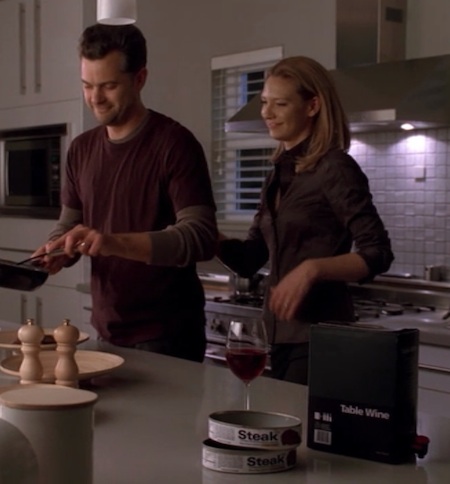Today I was thinking, what if we lived in an alternate universe where buildings were never designed to stay in one place. Yes, a building would be a single or multiple family dwelling, but it would also be a vehicle, a kind of self-propelling communal caravan.
Cities would form spontaneously as buildings came together in critical mass, and then they would drift, as dictated by the mysteries of time, fashion and economic circumstance. A person’s address would be a dynamic thing, an ever changing variable of lived experience.
Some buildings might wander south for the winter, others would cluster together in solidarity. Perhaps they would travel in packs, a pride of abodes drifting across the landscape in slow and regal splendor.
Coincidentally, this evening I saw an episode of “Fringe” that took place in an alternate version of our universe. As you can see in the picture below, our well-worn trope of the well appointed Yuppie kitchen has been selectively modified. The happy couple draws their fine wine from a box, their expensive steak from a can.

As I watched this scene, I couldn’t help wondering whether their building would migrate south for the winter.
You might be interested in reading some supermodernism, Ken…
Non-places, an introduction to supermodernity
http://www.amazon.com/Non-Places-Introduction-Supermodernity-Marc-Auge/dp/1844673111/ref=sr_1_fkmr0_1?s=books&ie=UTF8&qid=1377679610&sr=1-1-fkmr0&keywords=supermodernism+auge
Yes Sally, I am familiar with supermodernism and the writing of Augé. My post was about something distinct from the examination of airport lounges, shopping malls, and other “non-places” that emerge from modern trends in travel and consumption.
I was discussing a particular alternate-universe fantasy. Try to have fun with it. 🙂
Whether the people move through buildings or the buildings move through people, the principles of being transitory seem similar….